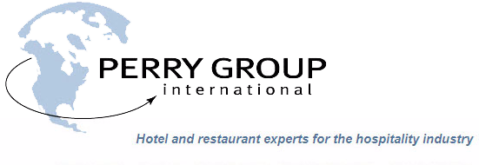Watching and adjusting manpower levels is probably the most important M that a restaurant turnaround consultant will evaluate. It can adversely affect your existing money and marketing significantly. However, many independent restaurant operators and those who lack prior restaurant management training will often overlook this key cost within a food service operation. DiningRoom Table SettingFor example, many restaurateurs think about labor costs in terms of what they pay an employee per hour. In San Francisco, the minimum wage is approximately ten dollars ($10) per hour. So it is common that a restaurant owner will think along the line that if there are 4 servers today for a breakfast and lunch shift, say 8 hours, so it is costing the restaurant about $320 to serve those meals. However, what gets lost in this thinking is the real hourly cost or staff expense for that shift is significantly higher and often more than 25% to 35% of hourly wages. In other words, that daily shift cost is really about $400 to $450 per day and more. How so? Every dollar paid to employees has associated costs that are incurred when you employ and staff that person, especially in San Francisco. There are payroll taxes assessed to the employer such as social security, state disability and workmen’s compensation insurance. Add to that heath insurance benefits or if you do not provide that insurance, in San Francisco employers pay into a health care fund instead. These costs alone are almost 30% or more. And then those employee meals and uniforms. If they are not on the clock then there are no added expenses. Of course, understanding the “true” cost of every labor dollar is important and it must be paid every pay period, which is every two weeks or so in many restaurants. Once you understand the actual expense that a restaurant turnaround consultant will analyze, next comes controlling it to where you minimize extra costs that impact your money (i.e. cash flow). At the same time, you want to employ staffing tools that provide optimum service levels to compliment your marketing so those customers buy more and return again and again. In chain restaurants, there are two important staffing tools used. One is a “weekly forecast” of daily customer counts by meal period along with corresponding check averages and anticipated special events and larger parties. The second staffing tool is what is called a “staffing guide” or labor control chart. This is in essence a guide of the number of staff members, such as servers, and the hours needed per shift or per hour to serve your customers based on your particular menu and style of service. A weekly forecast is formulated based on past historical trends. This information is readily available in the restaurant POS (point-of-sale) computer systems. Or if you are still operate with manual systems, a review of the daily cash register tapes and customer tickets is a second option. Based on this information, you would estimate the future customers and sales for the upcoming week by day taking into account any holidays, weekend or weekday spikes, large parties and the weather! This provides the foundation to the number of staff you need and when to schedule them. The labor control tool or staffing guide is used to formulate the employee schedule based on the anticipated customer counts and what employee hours and number of people you normally require to serve them. For example, if based on your food service operation, a server can wait on 25 customers every hour and a meal period, such as breakfast, is approximately 4 hours long, then you will staff a minimum of 1 server at a cost of 4 hours. However, the tricky part to using the staffing guide and forecast is to understand where the peaks are in those 4 hours. In other words, if you expect no more than 25 persons every hour, 1 server will be sufficient. Unfortunately, most restaurant customers do not come in spread apart. At breakfast as an example, customers will arrive between the peak periods of 7 AM to 9 AM if it is a business crowd. If your forecast calls for 100 customers and the majority will arrive in the peak period, optimum service dictates you staff at least 3 servers in that time period. Most states require a minimum 4 hours per shift. Unless you straggle a few of the servers over into a lunch period, it is safe to say you will need to staff and expend at least 12 hours of servers time at the appropriate hourly wage plus add on costs. In this scenario, a restaurant turnaround consultant will advise you that your true daily outlay for labor costs always requires adequate manpower to operate a restaurant successfully yet at the same time is withing the desired cost for those business periods.
Share this post





